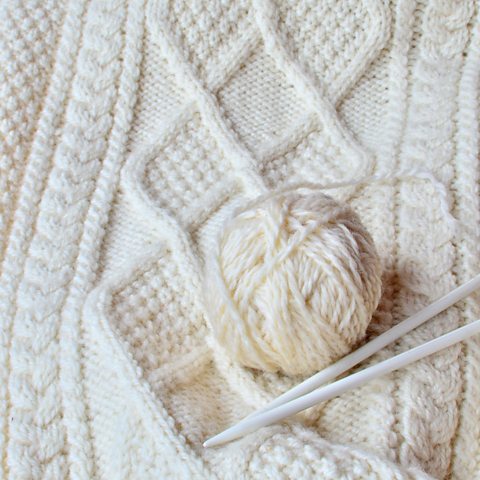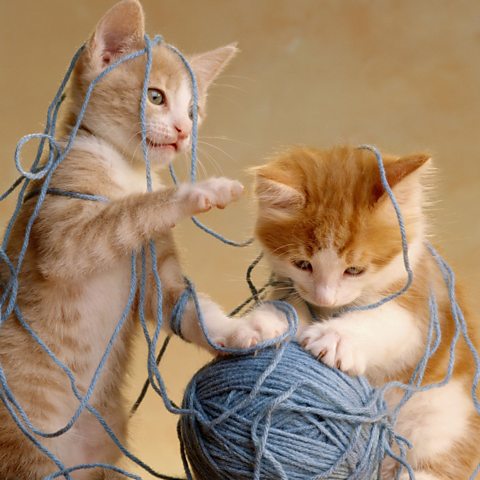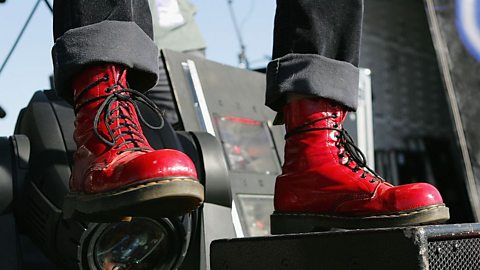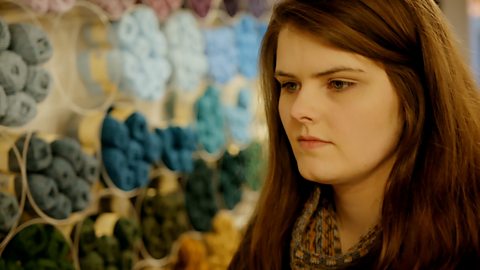Do you love curling up in a big cosy jumper when the weather gets frosty?
Us too! And as homespun crafts make the rounds on TikTok, it seems knitwear is as popular as ever. But did you know thereās a rich and diverse history behind this ancient pastime? From the humble smock to the gaudy Christmas jumper, “óĻó“«Ć½ Bitesize weaves through four knot-able knitwear moments.

The fishermanās friend: Ancient Aran waterproofs
The oldest record of hand-knitted garments comes from a pair of Ancient Egyptian socks, but the practice is thought to be much older ā variations of knitting, crochet and weaving are found in the history of many cultures across the world.
Although nowhere near as ancient, the iconic Aran jumper, recognisable by its chunky cable knit, has old roots. Originating from the Aran Islands off the west coast of Ireland, this distinctive style of knitting was used for farmersā and fishermenās smocks but was mainly produced by women.
The different styles were said to be a close-knit secret passed down through generations; however, contrary to popular belief, the signature ācableā style is said to have come much later, in the 20th Century.
The wool used for these jumpers was unscoured, meaning it kept its natural oils and helped waterproof them against the brisk Atlantic weather.


Revolution in a needle: Knitting in the USA
Across the sea, knitting became an act of revolution. While textiles have always been important to womenās history in many cultures, needlework was particularly integral to several political movements in the USA.
Before the revolutionary wars, women in the American colonies would defy the British textile trade by creating homespun cloth, even holding public āspinning beesā to see who could create the most yarn.
By boycotting British trade, these women contributed to the countryās economy and subsequently independence from the British Empire. Itās even rumoured that Molly Rinker, a tavern owner in Philadelphia, hid messages in balls of yarn to drop down to American troops while knitting on the cliff above them, using her image as an old woman knitting as a tool for espionage.
Following this, needle arts became a leisurely activity for the upper classes. However, for marginalised people, knitting was a survival skill ā particularly for freed enslaved women in the late 1800s, who relied on textiles and cooking as a means of income. Knitwear would reappear in many protests, including the US womenās suffrage movements.


From royal greens to queens of Hollywood: When knitwear entered fashion
Knitwear was still regarded as a hobby of the home and a valuable way for retired people to stay afloat, and thus not particularly fashion-forward.
In the 1920s, comfort, style and warmth took priority on the golf course as players wore outfits spun from wool and tweed. As wealthier classes took to the sport, long socks and knitted jumpers became part of the attire, and the Scottish Argyle pattern would soon be associated with golf fashion.
Later, old fishermenās knits would weave in and out of vogue as stars such as Marilyn Monroe sported cosy jumpers on the silver screen and Coco Chanel incorporated knitwear into collections on the runway in the 1950s and '60s. These collections also had an emphasis on light knitwear for recreational activities such as sailing and sports, elevating knitwear to a place of peak fashion.
In the '70s, advances in machine-knitting meant jumpers could be quickly and easily produced, and what was once a time-consuming and painstaking product became accessible to the masses.


Not another one! Christmas jumpers
Since their humble beginnings, Aran, Guernsey, Nordic, and Fair Isle knit patterns have become associated with the holidays due to their heavy, cosy textures. But it wasn't until the 1980s that these chunky garments became an official staple of Christmas.
In the age of Christmas specials, bright jumpers were popularised by various TV show presenters in their holiday broadcasts. Likewise, the host of Irelandās The Late Late Show would wear an extravagant jumper for the programmeās Late Late Toy Show Christmas special.
By the 1990ās and early 2000s, the stereotype of the terrible jumper gifted by an out-of-touch relative was solidified in Hollywood, and soon it was in vogue to gift loved ones with the ugliest designs one could find. Gaudy colours, jolly visuals and even lights and music became the ingredients of the modern Christmas jumper.
However, itās not the greenest of trends; in 2019 it was estimated that 12 million festive jumpers were purchased over the holiday period and likely only worn once. To keep it planet-friendly this year, consider having a signature jumper to reuse ā or, if youāre in need of a new one, swap with a friend or hunt in a charity shop for some second-hand seasonal stripes.
This article was published in December 2023

Histories of the mini skirt, the white wedding dress, and why the tale you've probably heard about nylon isn't true.

Regency era fashion trends that persisted
From dresses to accessories, we look at four Regency fashion fads.

Terri: knitwear designer and business owner. video
Terri designs and makes knitwear in the Shetland Islands.
